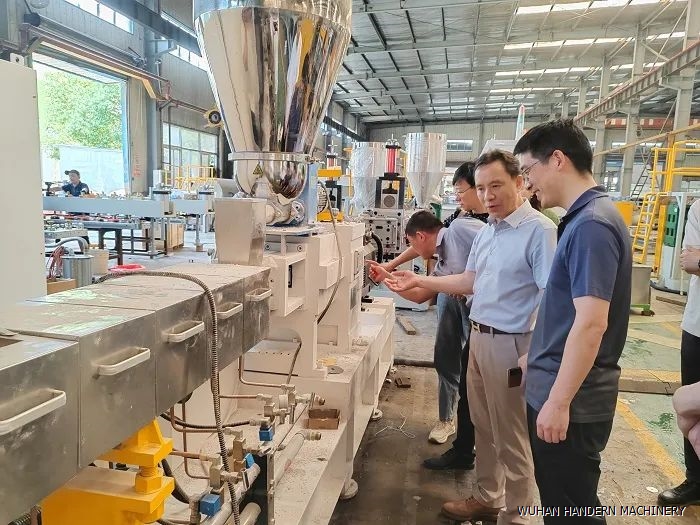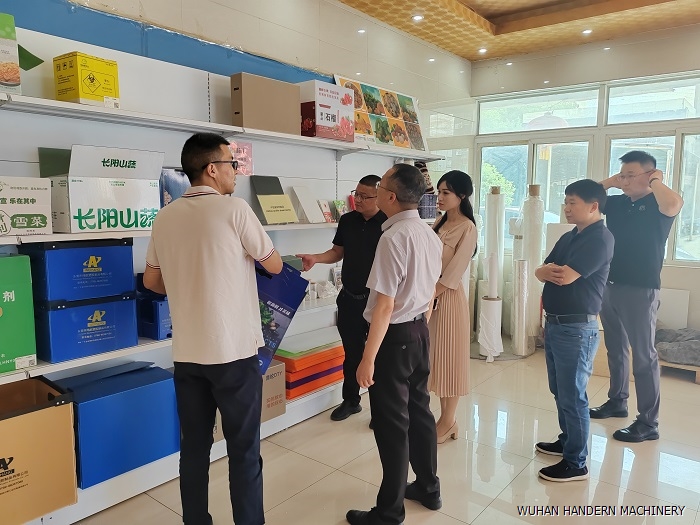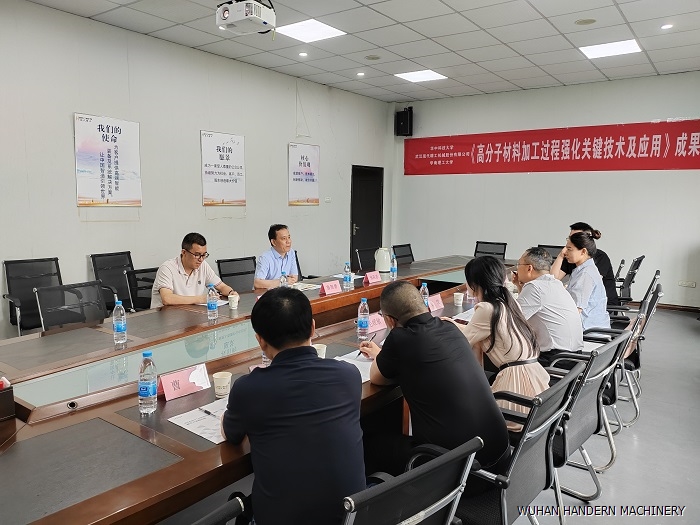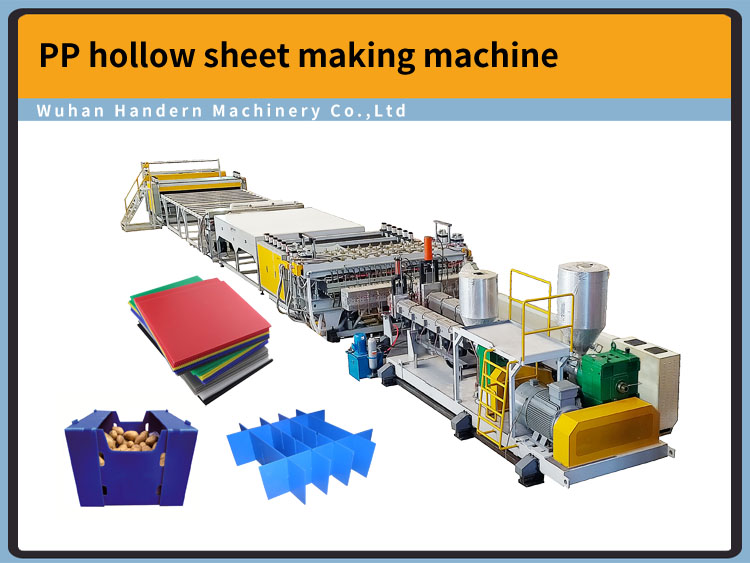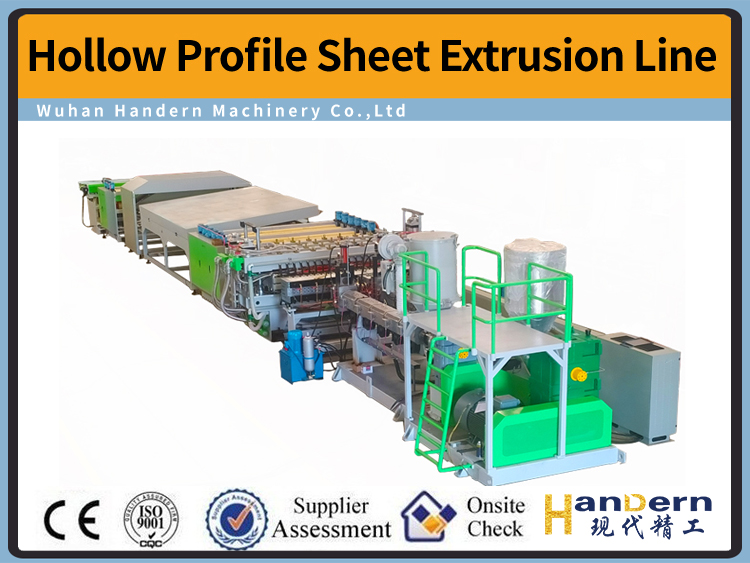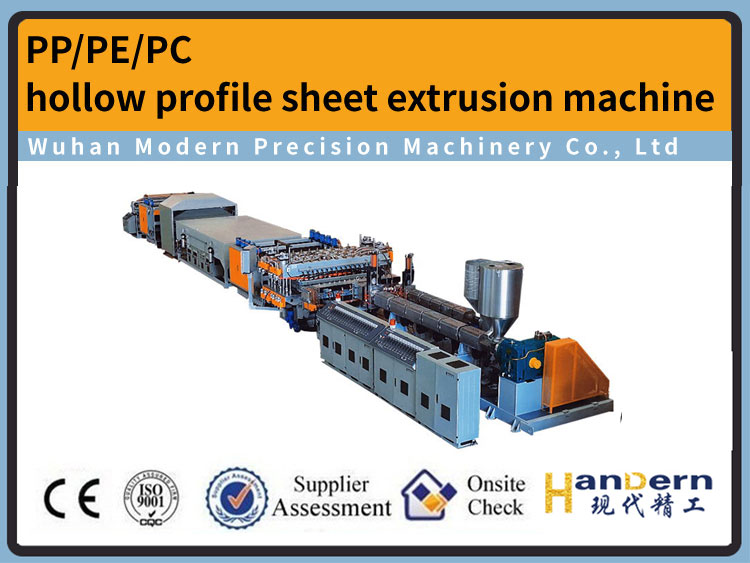Hollow Sheet Extrusion Line for Phosphogypsum Panels: Turn Waste into Structural Boards
DATE:2025/6/28 9:28:06 / READ: / SOURCE:This station
I. Technical Principles and Core Features
Phosphogypsum honeycomb panels are lightweight high-strength boards using industrial byproduct phosphogypsum as raw material, produced through processes like high-temperature calcination (800–1000°C) and additive modification. Core advantages include:
-
Prominent Environmental Attributes
-
Raw material: Waste residue from phosphate fertilizer industry (4–5 tons produced per ton of phosphoric acid), significantly reducing natural resource consumption
-
Fully recyclable and biodegradable, replacing wooden packaging boxes to reduce deforestation
-
Exceptional Performance
-
Waterproof, moisture-proof, and insect-proof; maintains structural stability after one-year water immersion
-
High compressive strength, capable of carrying heavy loads (tested load capacity over 3 times that of traditional cartons)
-
Lightweight design reduces logistics costs
Phosphogypsum honeycomb panels are lightweight high-strength boards using industrial byproduct phosphogypsum as raw material, produced through processes like high-temperature calcination (800–1000°C) and additive modification. Core advantages include:
Prominent Environmental Attributes
-
Raw material: Waste residue from phosphate fertilizer industry (4–5 tons produced per ton of phosphoric acid), significantly reducing natural resource consumption
-
Fully recyclable and biodegradable, replacing wooden packaging boxes to reduce deforestation
Exceptional Performance
-
Waterproof, moisture-proof, and insect-proof; maintains structural stability after one-year water immersion
-
High compressive strength, capable of carrying heavy loads (tested load capacity over 3 times that of traditional cartons)
-
Lightweight design reduces logistics costs
II. Application Scenario Expansion: Full Coverage from Packaging to Construction
-
Logistics Packaging Field (Industrial Pioneer)
-
Case: Guizhou Phosphating Group built China's first 25,000-ton/year anhydrous gypsum masterbatch and packaging box production line; products have entered market with customer recognition
-
Value: Solves moisture-proof transportation needs for electronics, agricultural products, etc.; customized designs enhance cargo protection
-
Building Materials Field (Potential Blue Ocean)
-
Wall materials: Phosphogypsum hollow strips used in prefabricated building partition walls, increasing construction efficiency by 50% compared to traditional masonry with humidity regulation
-
Structural components: Phosphogypsum cavity mold beamless floor technology applied in high-rise buildings, reducing self-weight by 30% and enhancing seismic resistance
-
Agriculture and Environmental Field
-
Improves acidic soil, supplements phosphorus and calcium elements required by crops
-
Replaces roadbed filling material, enabling solid waste resource utilization
Logistics Packaging Field (Industrial Pioneer)
-
Case: Guizhou Phosphating Group built China's first 25,000-ton/year anhydrous gypsum masterbatch and packaging box production line; products have entered market with customer recognition
-
Value: Solves moisture-proof transportation needs for electronics, agricultural products, etc.; customized designs enhance cargo protection
Building Materials Field (Potential Blue Ocean)
-
Wall materials: Phosphogypsum hollow strips used in prefabricated building partition walls, increasing construction efficiency by 50% compared to traditional masonry with humidity regulation
-
Structural components: Phosphogypsum cavity mold beamless floor technology applied in high-rise buildings, reducing self-weight by 30% and enhancing seismic resistance
Agriculture and Environmental Field
-
Improves acidic soil, supplements phosphorus and calcium elements required by crops
-
Replaces roadbed filling material, enabling solid waste resource utilization
III. Policy Drivers and Market Scale
-
Strong Policy Support:
National classification of phosphogypsum as "hazardous solid waste" with mandatory resource utilization;
*14th Five-Year Plan for Circular Economy* specifies "promoting large-scale application of phosphogypsum in green building materials"; regional subsidy policies introduced -
Broad Market Space:
China's annual phosphogypsum output exceeds 80 million tons (2024 data), comprehensive utilization rate only 49.9%; urgent stock consumption demand;
Packaging industry annual growth: 12%, eco-material penetration rate below 10%, huge substitution space for honeycomb panels
-
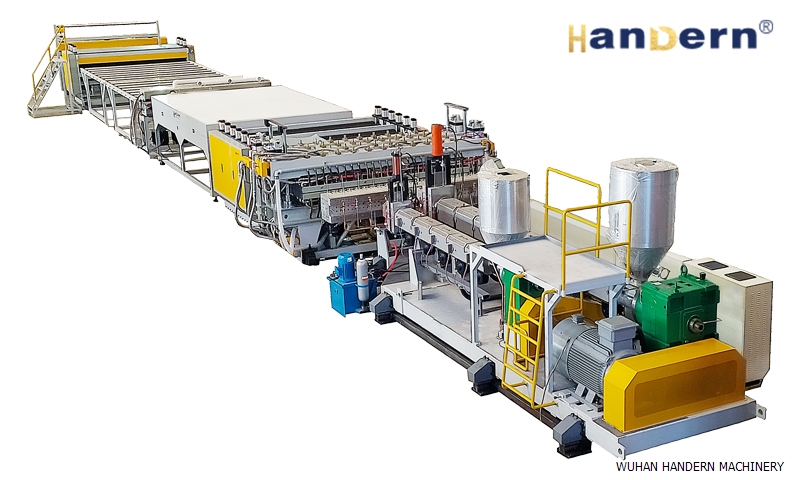
-
IV. Development Bottlenecks and Breakthrough Paths
-
Technical Challenges
-
Difficult impurity treatment: Phosphogypsum contains fluorides, organic matter, and radioactive elements affecting product stability
-
High costs: Pre-treatment process energy consumption high; approximately 15% more expensive than recycled plastic packaging
-
-
Innovation Directions
-
Purification technology upgrade: Develop low-cost purification processes like low-temperature calcination and flotation removal
-
Composite modification research: Combine with polymer materials (e.g., PP/PE) to enhance toughness and weather resistance
-
Smart applications: Embed RFID chips for full-process packaging traceability
-
-
V. Future Prospects: Trillion-Level Green Industrial Ecosystem
-
Accelerated Industrial Chain Integration
Phosphochemical enterprises (e.g., Guizhou Phosphating, Yuntianhua) extend downstream to building materials, forming "waste-raw material-product" closed loops -
International Standard Leadership
China leads formulation of ISO standards for phosphogypsum building materials -
Significant Carbon Reduction Contribution
Utilizing 1 ton of phosphogypsum reduces 0.4 tons of CO₂ emissions, supporting "dual carbon" goals
Conclusion
Phosphogypsum honeycomb panels transform from "industrial burden" to "urban mineral," exemplifying circular economy practice. With breakthroughs in pretreatment technology, policy dividend release, and market recognition, they are expected to capture 30% of the eco-packaging market within 5 years. Government-enterprise collaboration must overcome cost bottlenecks to accelerate "industry-academia-research-application" ecosystem development, ushering phosphogypsum resource utilization into its golden age.
-
Author:admin

